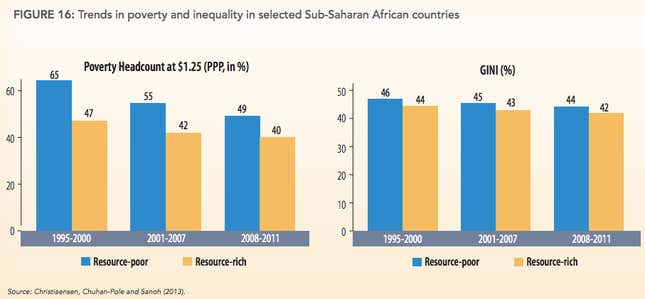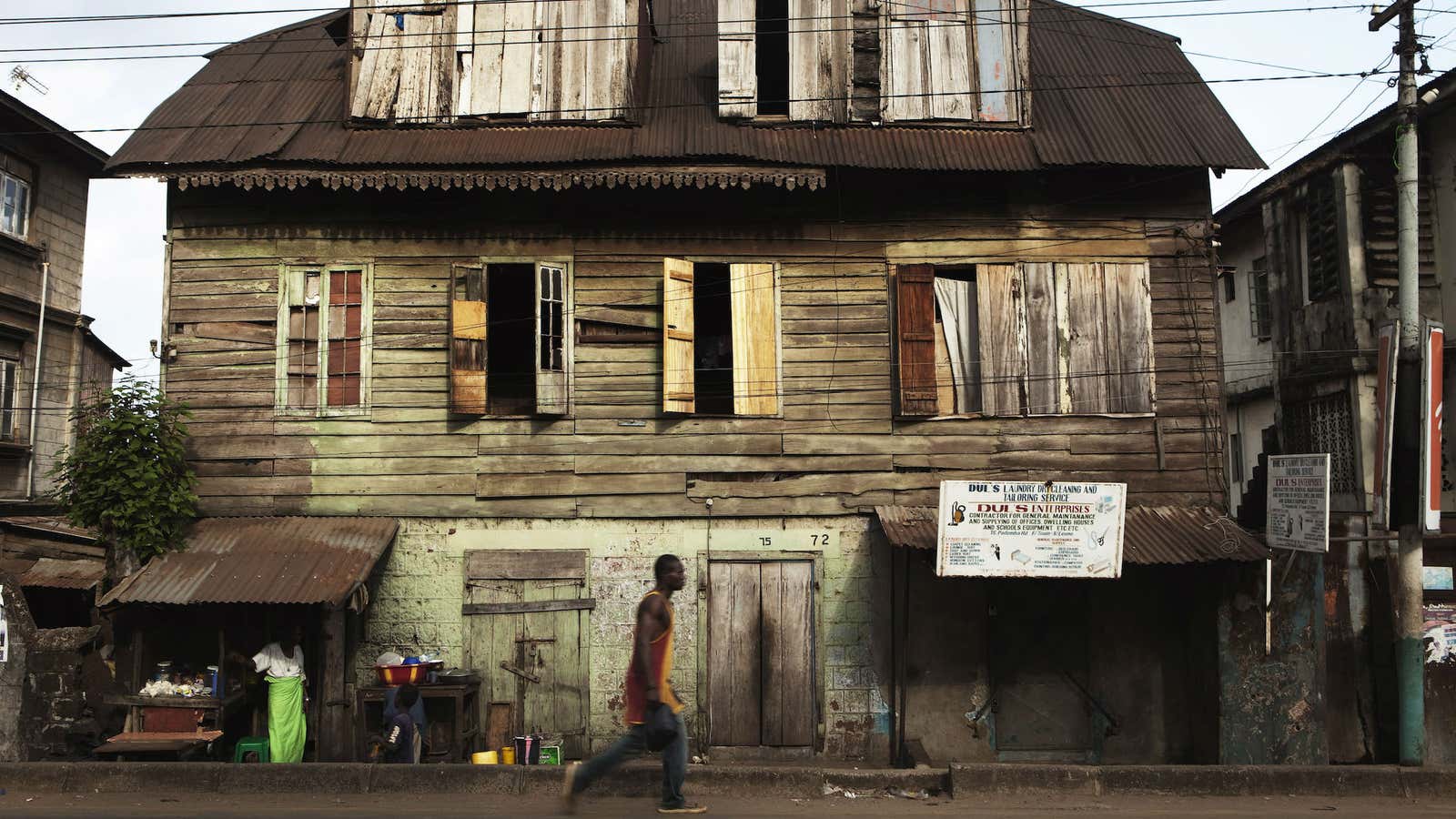Sub-Saharan African economies are expected to grow steadily over the next two years amid increases in domestic consumption and investment, according to the World Bank’s upward revisions (paywall) of earlier estimates in April. The new forecasts fit the narrative of the past decade that Africa is rising. But economic growth isn’t bringing down poverty and inequality as quickly as it should—even in some of the region’s fastest-growing, resource-rich African economies.
“Africa grew faster in the last decade than most other regions, but the impact on poverty is much less than we would’ve liked,” Francisco Ferreira, chief economist for Africa at the World Bank said in a statement on Oct. 7. ”Higher economic growth does not automatically translate into higher poverty reduction,” the World Bank report (pdf) said.
Between 1996 and 2010, the percentage of the Sub-Saharan African population living in poverty fell from an estimated 58% to 48.5%. There’s a pattern among those countries that have been less effective at reducing poverty than their peers. According to World Bank researchers, countries rich in resources—defined as those who derive over 5% of their GDPs from oil or non-oil minerals—grow faster than their resource-poor peers but poverty levels fall much more slowly.
Why is that? According to the World Bank, it goes back to what some call the “resource curse” developing countries have often faced. Because of corruption and poor transparency, oil revenue and other profits from resource extraction go straight into the pockets of a select few—rather than being reinvested in infrastructure or public services. The resource-rich countries studied in the report include Zambia, Angola, Nigeria, Sudan, Equatorial Guinea, Gabon and others.
Here’s a look at inequality in a group of resource-rich African countries with resource-poor ones:

Resource-rich countries grew 2.2 times faster than resource-poor ones, but the latter group saw the poverty rate fall from 65% in the 1995-2000 period to 49% over the span of 2008 to 2011. By contrast, the poverty rate only fell by seven percentage points in the resource-rich countries surveyed.
The idea that money is bypassing regular citizens of these African countries mirrors the conclusions of the Afrobarometer survey of over 50,000 people in 34 countries released last week. Economic growth is benefiting a small elite minority, mostly in urban areas and not slowly “trickling down” to the region’s poorer classes, according to respondents and researchers compiling the results. We reported yesterday that the region may be home to more billionaires than Latin America.
So how could things get better? Better management of mineral wealth, promoting agriculture—which appears to contribute more to poverty reduction and could benefit from high food prices over the next several years—and urbanization could all raise incomes, the World Bank says. Policies like these combined with the fast economic growth could see poverty fall even more to between 16% and 30% of the sub-Saharan African population by 2030.
